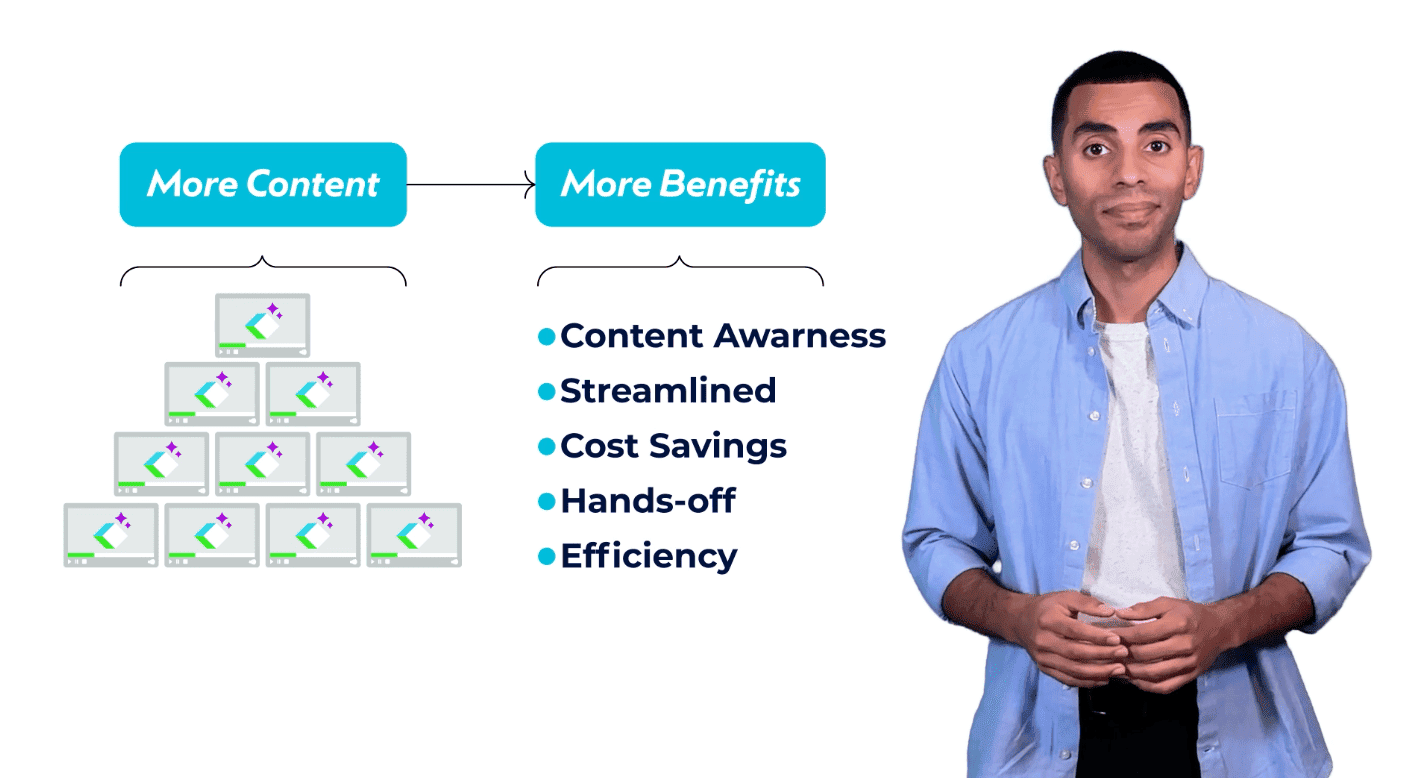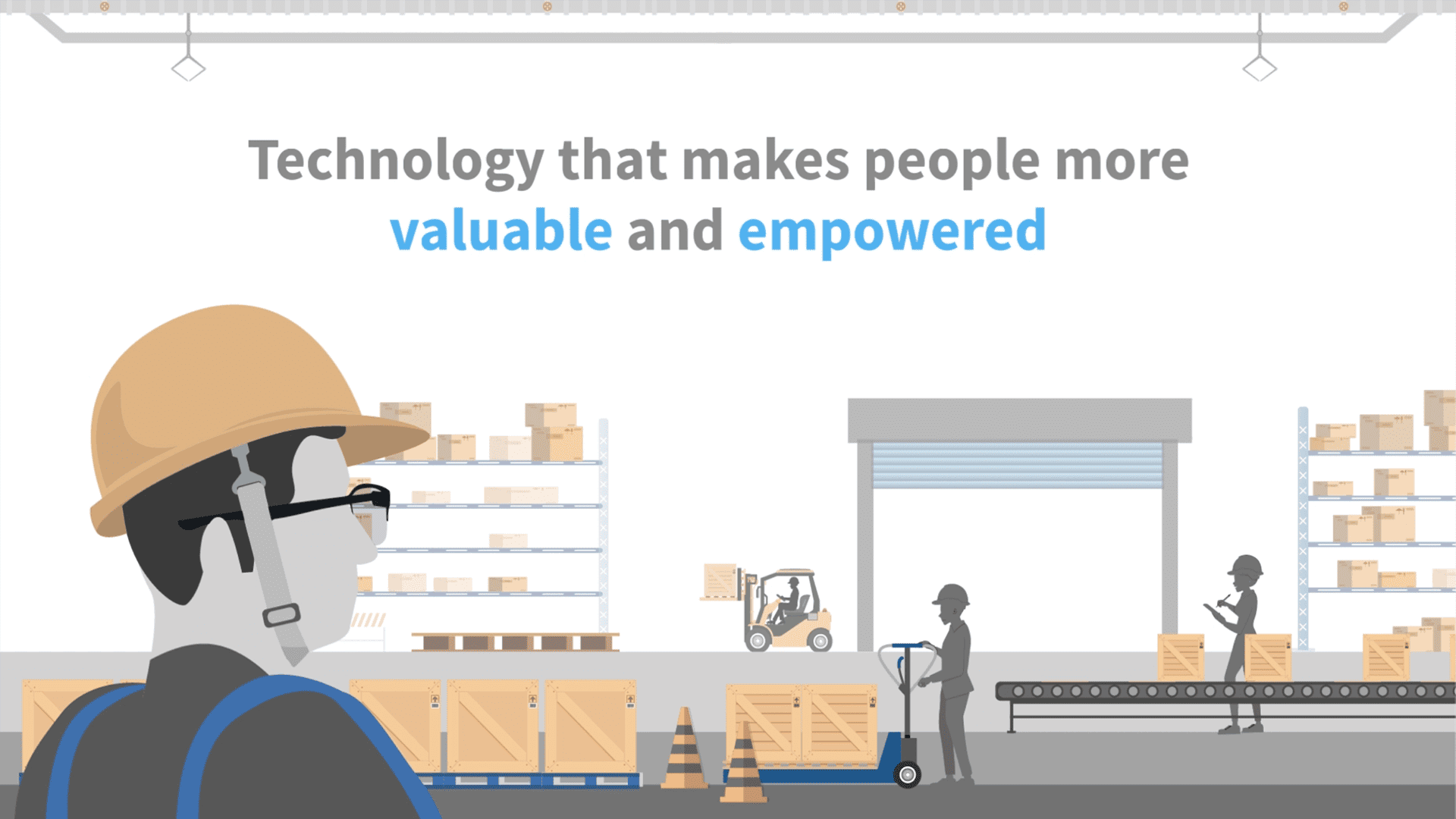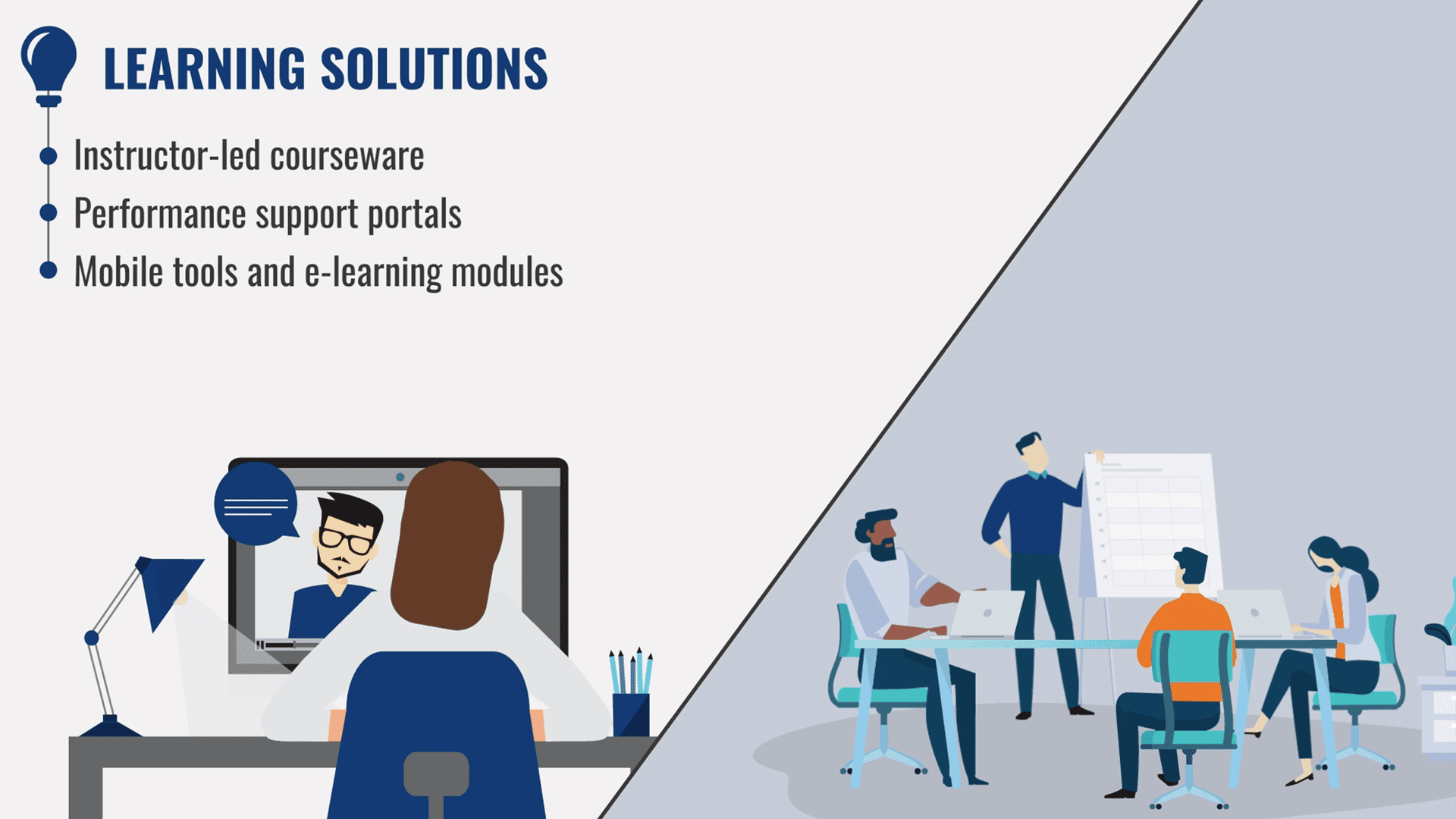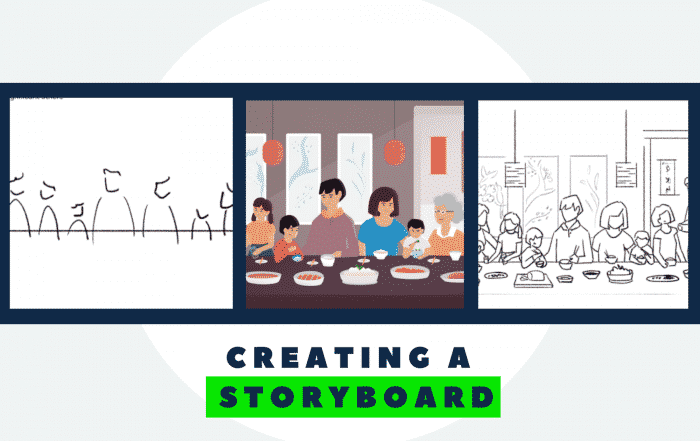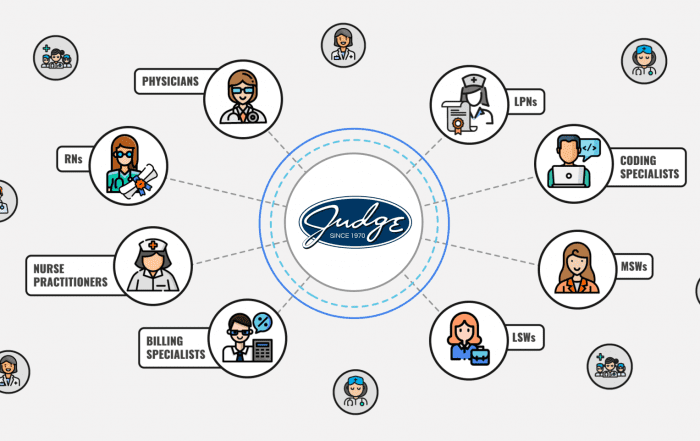Employee onboarding videos are designed to resolve a key problem.
Let’s start with what we know.
A smooth, comprehensive, and impactful new employee onboarding process is pivotal for creating a stable work environment that people want to be a part of.
Employee onboarding is a new employee’s first experience with your company culture and process, and it’s the key to setting them up for success—or failure. Yet, many organizations continue to rely on outdated, text-heavy manuals or costly and time-consuming in-person training sessions that fail to engage and prepare them effectively.
Training videos offer engaging, scalable, and flexible ways to effectively bring new people into the workplace—making it easier for employees, HR teams, and fostering a positive company culture from the very beginning.
In this article, we’re going to dive deep into what makes employee onboarding videos effective and how to create top-notch training content that works for you, and for your new team members.
Take a pause to view some samples on our Training Video Page, or read on!
Why Employee Onboarding Videos Work
The last thing a new employee wants to experience when being onboarded is a lengthy, exhausting, or downright boring training session. Sure, they want to succeed in their new role—but if they lack the tools to start with confidence they’ll almost surely get off on the wrong foot.
Typical onboarding methods often fall short, and that’s where video content comes in. Video is everywhere, so it’s little surprise that it is the preferred option for delivering crucial information to audiences.
Some of the reasons video works so well for employee onboarding complex topics can be broken up into digestible pieces. Messaging stays consistent across training steps and processes. Delivery can be catered to varying experiences and learning styles. New employees can learn at their own pace, revisit important information as needed, and end with a more positive and helpful onboarding experience.
Start your employees off on the right foot with videos that both inform and inspire—giving them the confidence they need to succeed at their new job.
Why Video is the Ideal Format for Employee Onboarding
Let’s explore the top reasons why video is the best medium for employee onboarding.
Video Breaks Down Complex Information
Employees have a lot to learn in their first days on the job: learning about company culture, job responsibilities, and compliance regulations, just to name a few. This can be a lot to process for a hire.
Videos make it easier to take all this information in by breaking it down and making it quick and easy to understand. By applying moving visuals with text and narration, otherwise dry or complex material becomes easier to understand and remember.
Video Creates Consistent Messaging for All Employees
A frequent problem with onboarding processes is a failure to keep messaging consistent across the learning content. Every employee needs the same high-quality training experience. The experience of in-person training can vary depending on the presenter or context. Video eliminates that inconsistency. Every new hire can get the same message, ensuring that everyone stands on the same foundation of knowledge to create a strong and stable company culture.
Video Appeals to Different Learning Styles
Everyone learns best in different ways. Some find visual learning to work best for them, others are auditory learners, and some need a hands-on experience to grasp and retain new information. With video, you can intentionally appeal to many of these learning styles by using appealing and understandable visual elements and clearly broken-down narration, which together helps break down complex ideas.
Video is Time-Saving and Cost-Efficient
Costs for traditional onboarding approaches can pile up. Scheduling in-person training sessions takes time and resources, especially for large organizations or remote teams. Employee onboarding videos can solve this. They can be created with scale in mind and, once implemented, they can be used repeatedly without the hassle of constant updating.
Video Creates Remote-Friendly Onboarding
How about training new employees that work remotely? Onboarding processes need to keep up with new trends, including the increasing trend of utilizing remote staff. Video training shines here, making staff training processes accessible to anyone, anywhere.
Key Topics to Cover in Employee Onboarding Videos
Let’s talk about key topics. What are the crucial things you want to include in your onboarding video(s)? Every company will have its own specific needs, but here are a few key areas you might consider:
- Company Culture and Values
Getting new employees familiar with company culture from the start helps set the tone and get them on the right track. Getting new hires familiar with how they fit into their new workplace over video can help them understand things clearly and quickly. Visual storytelling is particularly effective here. You may also consider utilizing real-life examples and testimonials to make the onboarding messaging more tangible and relatable. - Compliance and Safety Training
Every business has important regulations and policies for employees to follow. This may be industry-specific compliance rules, safety protocols, or company-wide policies. These kinds of topics can sometimes be dry, making it hard for viewers to follow and retain. But by presenting this material with animation or real-world scenarios—or a combination of both—you can get your new employees trained in the important stuff from the very start. - Job-Specific Responsibilities
What are your new employee’s day-to-day responsibilities? What are the necessary procedures, specific to their role, that they’ll need to know right away? Providing clear direction on these topics sets them up for success from the start. - Tools and Software Training
New employees need to get familiar right away with tools specific to their role, like software, communication platforms, and more. Onboarding videos can get new employees familiar with these quickly and efficiently, allowing them to jump into their role with maximum confidence.
Choosing the Best Format for Your Employee Onboarding Videos
Live Action Videography
Live-action video means real people and real environments. A live-action approach can provide a tangible, authentic touch, demonstrate actual tools or processes as they will be experienced day-to-day, or even introduce them to real places and people in the company.
When creating live-action videos, it’s important to plan carefully to ensure a professional-quality final result:
- Pre-production planning is essential. We’ll put together a detailed script, create a storyboard to sketch out the scenes, and if you are securing custom footage, ensure you have the right locations and equipment before filming begins.
- Production techniques such as lighting, sound, and set design can make a big difference in the quality of the final product.
- Post-production puts on the final touches, like fine-tuning the editing, tweaking graphics, adding music, and generally polishing the video to a professional level.
Animated Videos
For more complex or abstract concepts, animated videos can be incredibly effective. Animation allows you to visualize difficult ideas in a clear, simplified way, making it perfect for topics like compliance training, process flows, or tool demos.
Animated videos also provide an opportunity to present company branding and a tailored style. Whether you want a fun, informal tone or something more professional, animation can fit your needs. Plus, making updates is easy. When policies or processes change, animated content can be quickly modified without needing to set up and reshoot footage, as is required with live-action material.
Mixed Media (Live Action + Animation)
You might also consider combining animation and live action to get the benefits of both options. For example, you can have a live-action host explain the company’s values, while animation helps new employees understand their day-to-day responsibilities and the tools they need to do their jobs.
With Motifmotion, you can get powerful and effective videos in any of these formats, offering a range of options to suit your specific goals and preferences.
Writing a Script That Connects and Engages
The success of any video hinges on a strong, thoughtfully crafted script. Let’s go over some tips for making a top-notch script for your new employee onboarding video.
- Simplify Complex Information
Probably the biggest benefit of using video is its ability to make complex topics clear and understandable. This begins with setting up a clear, concise script that allows narration and visuals to work together to make the content optimally effective. - Keep It Conversational
You want your onboarding videos to be approachable, making them easy to watch. Using a conversational tone in your script can help the viewer feel like the video is speaking directly to them. Avoid overly formal or technical language unless it’s absolutely necessary, so the content remains relatable and easy to understand. - Storytelling Engages the Viewer
Storytelling is a universally powerful tool. By using real-world examples, case studies, or actual workplace scenarios, your new employees can quickly become comfortable and familiar in their new workplace.
Production Methods to Ensure High-Quality Employee Onboarding Videos
The quality of your video is just as important as the content. Let’s go over some production tips to ensure you get top-notch employee onboarding videos.
- Keep Videos Concise
To optimize content retention and engagement, videos should be kept short and concise. Videos lasting no more than 5-7 minutes per topic ensure that you keep the audience’s attention. To cover a lot of information or a series of topics, it may be preferable to break the content up into shorter modules. - Use Visuals and Animations
Visuals help clarify and reinforce key points, especially for complex topics. Consider using graphics, charts, or animations to explain detailed processes or workflows. - Prioritize Audio Quality
Quality audio, including voiceover, music, and sound design, is an often unnoticed but important element of making a professional end product. Using professional-grade microphones, skilled voiceover talent, and thoughtfully selected music can support the subject matter and greatly improve the viewing experience.
How to Make Employee Onboarding Videos Interactive and Engaging
Making your training videos interactive can significantly increase viewer engagement and enjoyment. Let’s go over a few ways to add onboarding video interactivity:
- Quizzes and Assessments
Quizzes can be used to test new hires on what they’ve learned. You can include quizzes at the end of each module to ensure employees have absorbed key points. - Clickable Sections
Clickable sections can allow employees to navigate the content at their own pace. This way, they can focus on the areas most relevant to them and revisit sections as needed.
Measuring the Effectiveness of Your Employee Onboarding Videos
Once your new onboarding videos are implemented, how do you know they are working? Let’s go over some options for how to track and gauge the effectiveness of your videos:
- Completion Rates
Are employees watching the videos in full? If the viewing completion rate is low, you might want to make the videos shorter or consider options to make them more engaging and interesting. - Employee Feedback
Employee feedback is essential. Do the employees think certain parts of the videos are slow or confusing? Gathering feedback can help you identify any weak points in the content and make the right adjustments. - Retention and Engagement
We can help you with analytics tools to track employee engagement with the videos. Are certain sections being paused and rewatched? This data can help pinpoint areas that need more clarity or emphasis.
Revolutionize Your New Employee Onboarding Process with Video
Integrating new hires in a thoughtful, thorough, and efficient way benefits everyone involved and can have a lasting, positive effect on an entire organization. Whatever you want to introduce—company culture, compliance guidelines, or job-specific tasks—videos provide an appealing and effective way to educate and inspire.
Motifmotion specializes in creating high-quality, engaging onboarding videos that blend live-action and animation. We can help you navigate selecting the perfect approach to training your new hires so they come into their roles prepared and confident. Whether you’re onboarding remotely or in person, the right video content can be a game changer for you and your staff.

